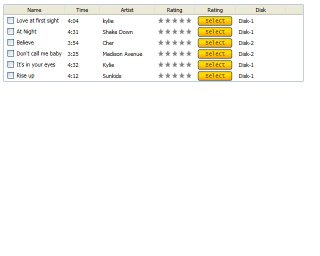Installed VS 2010 RC successfully. List of things to keep in mind while installing
1. Uninstall VS 2010 beta 2
2. Uninstall .NET 4.0 (there are two items related to this that you have to uninstall)
3. Any VS 2010 Office development components
If you are developing azure applications
1. Uninstall Azure SDK
2. Uninstall VS 2010 and VS 2008 tools for Azure
----------------------------------------------------------
a] Install VS 2010 RC
b] Install VS2010 RC TFS Client
c] Install Azure SDK (1.1)
d] Install Feb 2010 release of Azure tools (not NOV 2009)
Saturday, February 13, 2010
VS 2010 RC and SilverLight Client Proxy with collections
I have this application. Some of the data types in server application are collections of type ObservableCollection.
Example:
public class VisitCounts : ObservableCollection[visitcount]
{
}
In VS 2008 silverlight client application generates a proxy where I can still reference ObservableCollection in e.Result (of async calls).
For whatever reason, VS 2010 RC is not able to generate proxy with these special collection types (even after tweaking the advanced options).
Example:
public class VisitCounts : ObservableCollection[visitcount]
{
}
In VS 2008 silverlight client application generates a proxy where I can still reference ObservableCollection in e.Result (of async calls).
For whatever reason, VS 2010 RC is not able to generate proxy with these special collection types (even after tweaking the advanced options).
Friday, February 05, 2010
SSIS and MERGE statement
I encountered an error while working on a DW/ETL project.
If you are using dynamic connection manager settings in your SSIS packages, you some how set the connection string as follows
Provider=SQLOLEDB.1;Initial Catalog=MYDB;Data Source=(local);User ID=myuser;Password=myPassword;
Well this works just fine as long as you are NOT using any of the SQL Server 2008 new features.
In my case, I had to use MERGE statement and above connection string did not work. After spending couple of hours, I found out the issue. You have to make sure that, new provider will be used in your connection string. The connection string should look like this.
Provider=SQLNCLI10;Initial Catalog=MYDB;Data Source=(local);User ID=myuser;Password=myPassword;
Hope this helps....
Friday, October 31, 2008
Creating connection strings for various sources
If you are like me, you are working with lot of different providers (ODBC, OLD DB, Analysis Services Cubes etc.). I can not remember the syntax of these connection strings. Sometimes I need this connection string to use it in my C# applications, sometimes I need them to work on PerformancePoint server etc.
So far this is the best way to create the connection strings. This tool saves the connectiong string in a text file.
1. Create a text with file with extension '.udl' and save the empty file.
2. Double click this file and enjoy....
So far this is the best way to create the connection strings. This tool saves the connectiong string in a text file.
1. Create a text with file with extension '.udl' and save the empty file.
2. Double click this file and enjoy....
Wednesday, September 27, 2006
Buttons with in a ListView and Animation
WPF - Command and User Interface
WPF is built from ground up. After trying out different scenarious, i am starting to beleive that WPF will let us seperate the UI and business logic (provided your design is sound).
I have built some prototypes using DM-VM-V pattern. This lets us seperate the UI and business logic. However I am seeing the following exceptions.
Here is the scenario.
I have a ListView with few rows and my VM has three commands
Add
Delete
Update
1. Delete and Update works very well. Your command deletes the record from your server. Assuming VM has some kind of call back interface implemented to refresh its collection, UI refreshes itself
2. Add
When uses clicks on 'Add', I would like to bring up a dataentry window ( say NewCustomerWindow). Where should the logic of creating/displaying should recide? I do not want my command to know about this page (in addition I do not want to hardcode this window either). There must be a way out there to specify this declaratively in the XAML. I have not found it yet.
I have built some prototypes using DM-VM-V pattern. This lets us seperate the UI and business logic. However I am seeing the following exceptions.
Here is the scenario.
I have a ListView with few rows and my VM has three commands
Add
Delete
Update
1. Delete and Update works very well. Your command deletes the record from your server. Assuming VM has some kind of call back interface implemented to refresh its collection, UI refreshes itself
2. Add
When uses clicks on 'Add', I would like to bring up a dataentry window ( say NewCustomerWindow). Where should the logic of creating/displaying should recide? I do not want my command to know about this page (in addition I do not want to hardcode this window either). There must be a way out there to specify this declaratively in the XAML. I have not found it yet.
Subscribe to:
Posts (Atom)
